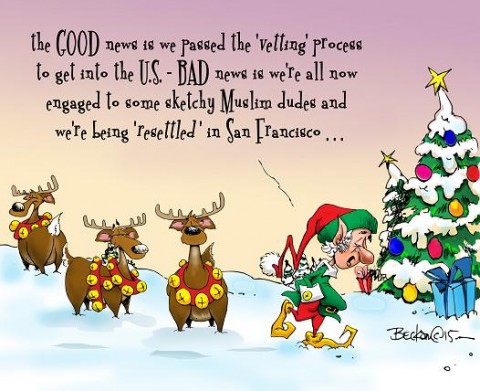Nine Lives
By Stan Welch
What a roller coaster ride Charleston and South Carolina have been on in the last few days. Nine innocent, peaceful souls were murdered in, of all places, a church; at,of all times, during a Bible study; by, of all people, a stranger they had welcomed into their midst.
Nine people slaughtered in an act of racial hatred that stunned the nation. But as horrible as that action was, it was what happened next that stunned the whole world. Not a stone was thrown, not a fire lit. People of all colors joined hands and opened their hearts instead of closing them. The victims’ families, in a display of faith and Christian grace, offered their forgiveness to the one who just days before had torn their lives and worlds apart.
It was a message so powerful that it snuffed out any flames of hatred that might have been taking hold. When a well known Confederate monument at the Battery was apparently defaced by angry black citizens, with racially charged slogans, blacks and whites worked together to drape the statue and cover the damage. They then ignored it. Hatred simply had no place on the itinerary last week.
Those who traveled to Charleston with their own plans in mind were blown out like candles in a storm, and left to marvel at the strength and the compassion of a city best known for starting the Civil War. Those wishing to ignite another Ferguson or Baltimore were thwarted by a community determined that the victims be remembered for their lives, and not just their deaths.
The people of Charleston and the areas around it came together in a show of love and unity not seen in this country in a long time. People stood on downtown street corners and prayed together, unashamedly. Black and white together, they stood and prayed and sang hymns. They beat back the hatred that the sick killer had tried to ignite.
At a time when it sometimes seems that religious freedom is facing challenges both cultural and political, such an open expression of faith was a message in itself. Long known as the Holy City because of the number of its churches, and their steeples that mark the city’s skyline, Charleston broadened and strengthened its claim to that nickname.
They came together and stood united, just as they had more than a quarter century earlier, when Hurricane Hugo wrecked the city, but could not stop its people. That spirit spread quickly across the state, as South Carolinians acknowledged that which we have in common, instead of our supposed differences.
I grew up in Charleston, after my family moved there shortly after World War II. I grew up there during the civil rights movement. The history of Charleston and of South Carolina is, as United States Senator Tim Scott said this week, provocative and rich.
It is proper to remark here that Senator Scott, our state’s first black U.S. Senator, continues to grow into the stature of statesman, and not just politician. His love of his state, his hometown, and its people has been apparent throughout what must have been a very wrenching and difficult week. He and Governor Haley and Mayor Joe Riley have done themselves and South Carolina proud.
I know that the history of this state can be very different depending on one’s skin color. But whatever our perspective, whatever our pigmentation, our history is a common one. Black and white, we have lived together for centuries. Our history, although not always happy, or just, is a shared history. We know each other. We care about each other. Most importantly, we know that we need each other.
Never have we needed each other more than we did this week, and to our everlasting credit, we reached out in compassion, instead of striking out in anger. Sunday evening, more than twenty thousand people gathered and built a chain of unity across the iconic Ravenel Bridge that has become so powerful a symbol of Charleston. Twenty thousand people walked in the Charleston summer heat to show the world how neighbors respond in times of trouble.
I wrote the paragraphs above on Monday morning. I meant every word that I wrote. I had never been more proud of my state and her leaders and her people. Then, in an act of political expediency, and with no public debate, Governor Nikki Haley and other political charlatans called for the immediate removal of the Confederate Battle Flag from the Statehouse grounds. Nikki Haley went from her brightest hour to an act of knee jerk opportunism in the wink of an eye.
And she betrayed many of the same people who had so willingly extended the hand of friendship in a time of need. I, for one, felt as if I had been slapped in the face. I am the proud descendant of Southern freedom fighters, a number of whom died in uniform, or in federal prison camps. As a descendant of such men and women, I value my Southern heritage,and I share their innate and learned distrust of the government. Nothing that happened yesterday gives me any reason to reconsider that position.
The issue of the Confederate flag was settled by the General Assembly more than a decade ago, when another political coward, also a Republican governor in his lame duck second term, betrayed his promise never to remove the flag from the Statehouse. But David Beasley did indeed lead the movement to remove the flag.
The General Assembly hammered out a hard fought compromise to move the flag from atop the Statehouse dome to its current position at the Confederate Soldier’s Memorial. Many of used knew then that the war against our heritage to placate the chronically offended would not stop there. I’m actually surprised that it has taken this long.
To all the commentators and carpetbaggers who know nothing of my Southern heritage, the Confederate Battle Flag has not flown over the Statehouse in years. Is there a more appropriate location than the Soldier’s Monument? It bewilders me to see my rights and heritage tossed aside simply because a deranged killer ed it to make himself feel like less of a loner. It saddens me to think that so many simple minded people can’t think past that fallacious and prejudiced connection; and that apparently one of them is the governor of my state.
I am trying to deny the anger that this betrayal causes in me, and to cling instead to the pride I felt just hours before this act of betrayal. I am angered and saddened that the steps that were taken this week to come together and move forward have to be at the expense of the past. Does it make any sense whatsoever to remove the battle flag and leave the monument commemorating those who carried it into battle?
Or is that next, Nikki?















